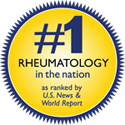Summary
In a case series, Johns Hopkins researchers used infrared thermography (IRT) to capture heat patterns associated with the erythema migrans (EM) rash and surrounding inflammation in early Lyme disease.
The imaging revealed inflammation following venous channel-like patterns that extended well beyond what could be seen with the naked eye, offering new clues about how a Lyme disease infection may spread under the skin.

Why was this study done?
Lyme disease, caused by Borrelia burgdorferi bacteria from tick bites, triggers inflammation that increases blood flow, warmth, redness, and swelling in the skin around the bite. When present, the early-stage EM rash can be difficult to identify, especially on darker skin or when the rash is faint, changing, or multiple lesions are present. Missing the rash can delay diagnosis and treatment.
Infrared thermography (IRT) is a non-invasive imaging method that detects skin heat patterns invisible to the human eye. IRT has been used in other inflammatory conditions but not previously tested in Lyme disease. The Johns Hopkins researchers explored whether IRT could reveal visible and hidden aspects of EM, including inflammation patterns that could shed light on how the bacteria and the body’s immune response spread through the skin.
How was this study done?
In this cases series, three patients with suspected early Lyme disease and EM rashes were reported. Researchers used an infrared camera to record skin temperature patterns, comparing rash areas to nearby healthy skin and to visible light photographs. Because inflammation from a Lyme infection increases local blood flow and warmth, thermography could highlight where inflammation extends beyond the visible rash borders. The team also noted whether the thermal patterns aligned with possible venous channels beneath the skin.
What were the major findings?
The study found that the Lyme disease EM rash area showed increased warmth compared to nearby healthy skin, making the rash easier to detect using infrared thermography.
Thermal images revealed heat patterns following vein-like tracks, suggesting inflammation may be spreading along venous channels.
These patterns extended well beyond the visible rash, indicating that underlying inflammation develops beyond visible rash borders.
Such evidence of venous dissemination might help inform hypotheses about how Borrelia burgdorferi spreads through tissue during early infection.
What is the impact of this work?
Although infrared thermography is not available in most clinical practices and is unlikely to change routine Lyme disease diagnosis at this time, it could become a valuable research tool. The ability to visualize venous channel-like and extended dissemination patterns may deepen scientific understanding of how Borrelia burgdorferi infection and inflammation spread in early Lyme disease. It may also help researchers study EM in patients with darker skin tones, where visible rash signs can be harder to detect. Larger studies are needed to confirm these findings and determine IRT’s accuracy, reliability, and potential role in diagnosis across diverse patient groups. If validated, this method could help support earlier and more accurate detection, providing a clearer picture of disease spread and potentially improving early diagnosis, treatment, and patient outcomes.
This research was supported by The Lyme Disease Research Foundation of Maryland
Study team members: Natalia I. Brothers • Alison Rebman • Jonathan M. Zenilman • John Aucott


